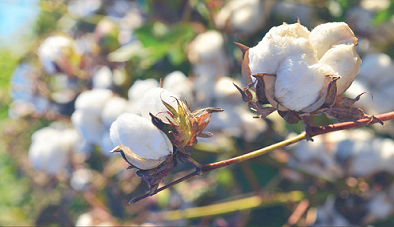
info.afrindex.com
China-Africa Trade Information Service

info.afrindex.com
China-Africa Trade Information Service

Image: opecfund
Ethiopia is part of the sub-Saharan African countries that produce and export cotton. It has a long tradition of cotton cultivation, with an estimated area of more than 2.6 million hectares, suitable for cultivation. The main markets for Ethiopian cotton are Africa, Asia and Europe, and Asia alone accounts for 67% of total exports.
Cotton is a major cash crop. From the 1940s to 1970s, Ethiopia was importing raw cotton to satisfy the domestic demand of its textile factories. Following the establishment of state farms and large-scale private farms in 1970s, the country started exporting cotton. However, due to the drought in the 1980s, the country discontinued the export of cotton. Then, in 1994/95, the country resumed exporting lint cotton .
The export declined because Ethiopia banned exports of cotton in 2010 to protect domestic textile firms from high international cotton prices. The ban did not yield its intended result of encouraging textile and apparel manufacturers to use locally produced cotton. However, after the ban was left at the end of 2012, despite rising local demand for cotton, Ethiopia recently started exporting small volumes of cotton to Indonesia and few EU-member countries.
Ethiopia is one of the African countries that produce and export cotton. It has a long tradition of cotton cultivation with an estimated area of 2.6 million hectares suitable for this product. Of these 65% is found in 38 high potential cotton-producing areas and the remaining 0.9 million ha or 35% is in 75 medium potential districts. Of the total land under cotton cultivation, 33% is cultivated by small holders, 45% by private farms and 22% are state-owned farms.
Ethiopia possesses 2,697,640 million hectares of land suitable for growing cotton; an area that equals the cotton land in Pakistan, the world’s fourth largest producer.
Currently, majority of the cotton cultivation takes place in the Awash Valley, with some cultivation also taking place in Gambella, Humera and Metema. Ethiopia can also produce irrigated cotton. Out of 84,000 hectares of land that is under cotton cultivation, only 35,000 hectares is irrigated. The major potential cotton-growing areas include Omo, Ghibe, Wabi-Shebelle, Awash, Baro-Akobo, Blue Nile and Tekeze river basins.
Ethiopia produces an average of 33,842.10 metric tons of cotton in the year 2000–2018. With these year durations, Ethiopia produces a minimum of 14,000 in the year 2001 and a maximum of 62,000 metric tonnes in the year 2012.
Currently, Ethiopia has about 14 textile factories and 50 medium-to-large garment manufacturers. There is a relatively better FDI flow in the textile and garment sector; especially many Turkish textile firms are relocating to Ethiopia. Hence, the demand for raw cotton and fabric continues to expand as existing textile firms expand and new domestic and FDI firms join the sector. While cotton produced by the state farms and private commercial farms is mainly used in the modern textile manufacturing sector and to some extent exported to foreign countries, cotton produced by peasant farms is for the large part used by the handloom sector. The high-quality cotton yarn produced would be packaged and supplied primarily into Ethiopia’s growing textile industry (80%), with surplus production exported to the global textile and garment manufacturing market (20%).